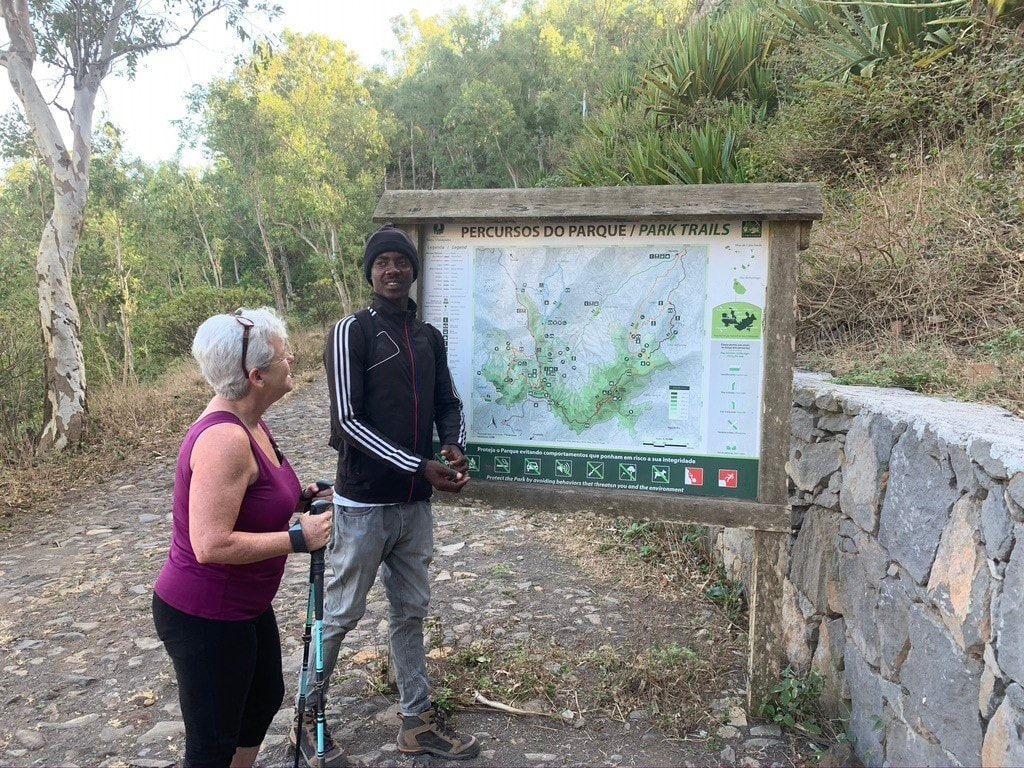
Our guide, Zegue, met us at the gates of the Cote de France, a hiker’s B&B in among the jagged mountain peaks of Santiago Island, in Cape Verde. It was only 9:00 a.m. but already the sun was hot. DH and I had coated ourselves in #50 sunscreen under our t-shirts and shorts. Tall, skinny, 28 year old Zegue was wearing a black toque, long sleeved black track jacket with a t-shirt underneath it, jeans with thermal socks and hiking boots.
“Don’t you find that hot?” I asked, violating my mother’s rule that we don’t ask personal questions.
“Yes,” he admitted. “But the sun is strong. This protects my skin.”
It is true that sunscreen is expensive and can be hard to find here, but I’m sure I would have passed out from the heat had I been dressed as he was.
Zegue speaks Creole, Portuguese, a little bit of French and even less English. But, having lived here his whole life, he knows the mountain paths and the secrets of the aluguers (collective mini-busses), which are the main way people get around the island.
Our first aluguer of the day was full but had regular mini-bus seats with enough of them for everybody. No seat belts, of course. Music blared as we whipped up and down and around the tight mountain curves to get to the starting point for our hike.
DH loves hiking. I like the idea of hiking. I like the views. I like the sense of accomplishment if and when I survive without having broken any body parts. More importantly, I suffer from FOMO – Fear of Missing Out – if I sit around at a hotel while DH goes hiking. So I keep letting myself get talked into beautiful, killer hikes.
We have a pattern, DH and I. On Day 1 I join him for a hike. It is beautiful. About halfway through I start blaming myself for having been so stupid as to have agreed to this hike. Three quarters of the way through I’m blaming him for having talked me into this damned hike, and starting to wonder what will happen if I re-break my leg here in the middle of nowhere. If we thought getting help when I broke my leg on a hike in Stockholm was difficult, it was nothing compared to what it would be on this tiny mountain path. On Day 2 of the pattern I cannot walk. DH goes hiking while I sit alone at the hotel.
Why do I do this? It’s a debate: do I do easier hikes, but then run the risk of being too tired out to do the ones with the really great views? Or do I accept that I might only manage one, so let’s make it a good one! FOMO usually tips the balance to the latter approach.
Things seemed pretty good at the start of the hike. The climb upward through the Serra Malagueta Natural Park was not too difficult. I had taken Ventolin, was using hiking poles, and only had to get DH and Zegue to slow down their brisk march a tiny bit.
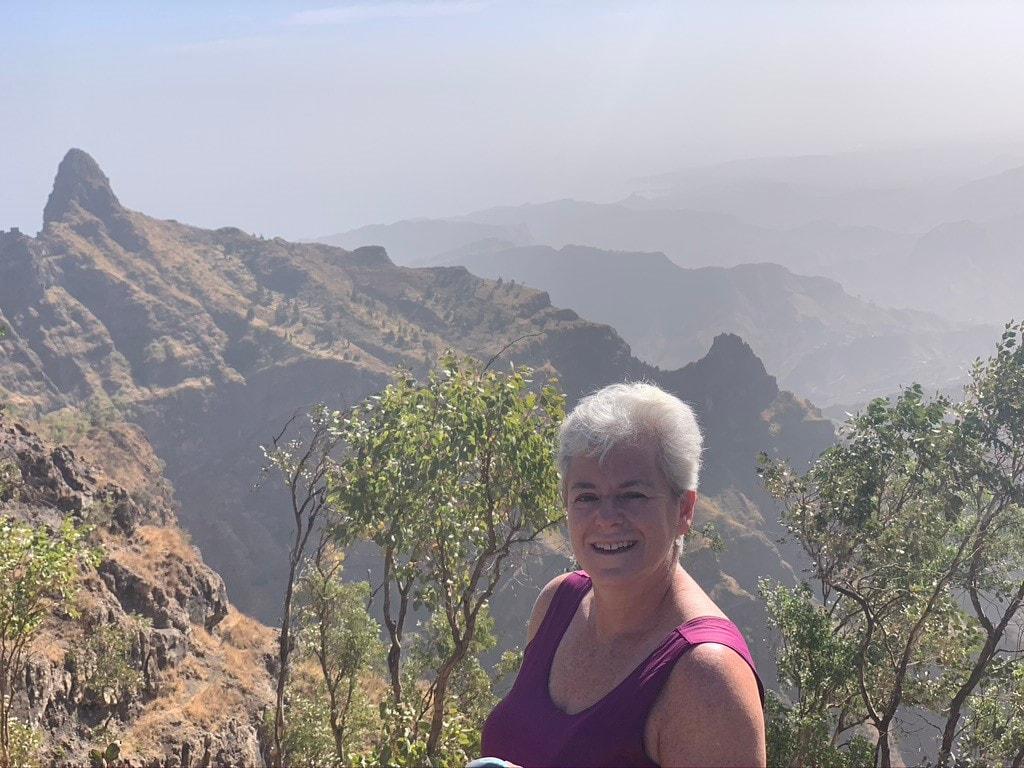
The jagged mountains all around us were like none we had ever seen before. As if some deity had thrown giant boulders into running lava and then frozen the scene as the lava splashed upwards. (Yes, all you geologists out there, I know this is nothing like what actually happened to create these saw-toothed peaks. It’s a simile, OK?) Luckily, the unusual scenery inspired DH to stop often to take pictures, so I was able to catch my breath without being the wuss.
This volcanic island is relatively young, in geological terms, so the mountain edges are sharp and the angles steep, not yet settled into the sturdier shapes of even relatively young mountains like the Canadian Rockies. The mountains on Santiago have the advantage of capturing some fresh water from the clouds and the occasional underground spring, unlike the lowlands around the edges of the island.
Agriculture is everywhere, with two-foot-wide terraces climbing up the mountainsides. Most are planted with stalks of corn, intertwined with beans. The corn provides a support for the beans to cling to as they grow. The beans provide a bit of cooling shade to the corn and help retain the water for a little longer before it evaporates. Together, beans and corn make a complete protein, and are a staple of the local diet.
Many small stone houses high up on steep cliffs lie abandoned due to water shortages. The island’s population has been sliced in half several times from extended periods of drought. But little communities of a handful of houses still exist three quarters of the way up, accessible only by a hard trek up and down narrow, loose pathways on foot or by donkey.
As we started the long descent the path got narrower and less stable. Even DH, who loves to run and skip along uneven mountain paths, fell once and had a few other close calls. I fell a half-dozen times in the loose dirt and gravel. It wasn’t the falling that hurt or scared me. It was glancing over the side. If I fell the wrong way I would easily tumble off the mountainside head over heels to my grave. In many places the path was no more than a foot wide. I couldn’t place the hiking poles beside me because there was not enough room. Erosion had narrowed the path even further in some spots.
My legs turned to jelly. I glanced over the edge.
“These paths are awfully narrow.”
“Do you have vertigo?” Zegue asked, surprised by my comment.
“Not until now.”
“Doucement,” he said calmly. “Doucement.”
We carefully threaded our way among a group of men lifting heavy stones into place to rebuild part of the path that had fallen away. We passed a group of women harvesting beans under the blazing sun. One of them laughed at how scared and tired I looked. Wimpy little white woman; that’s me.
At one point I froze. There was too big a fine-gravel-covered drop ahead of me. I couldn’t do it. DH, of course, was happily skipping (and slipping) along ahead of us. Zegue moved terrifyingly close to the edge, his feet hanging part-way into the abyss, and took my arm. Like a parent dragging a nervous child, he half-carried, half-pulled me down to the next safe(ish) spot. Apparently he started seeing me as a child too. When we were waiting for the busses later (spoiler alert: I survived) he kept ruffling my hair and smiling as though he were my older cousin.
As we continued down the uneven trail, we were passed by two women carrying huge sacks of beans on their heads, easily navigating the bumpy terrain in their flip-flops. One of them was about my age and used no hands to hold her giant load. The younger woman had not yet mastered the skill. She kept one hand on the bag atop her head and stopped a few times to make sure her footing was solid.
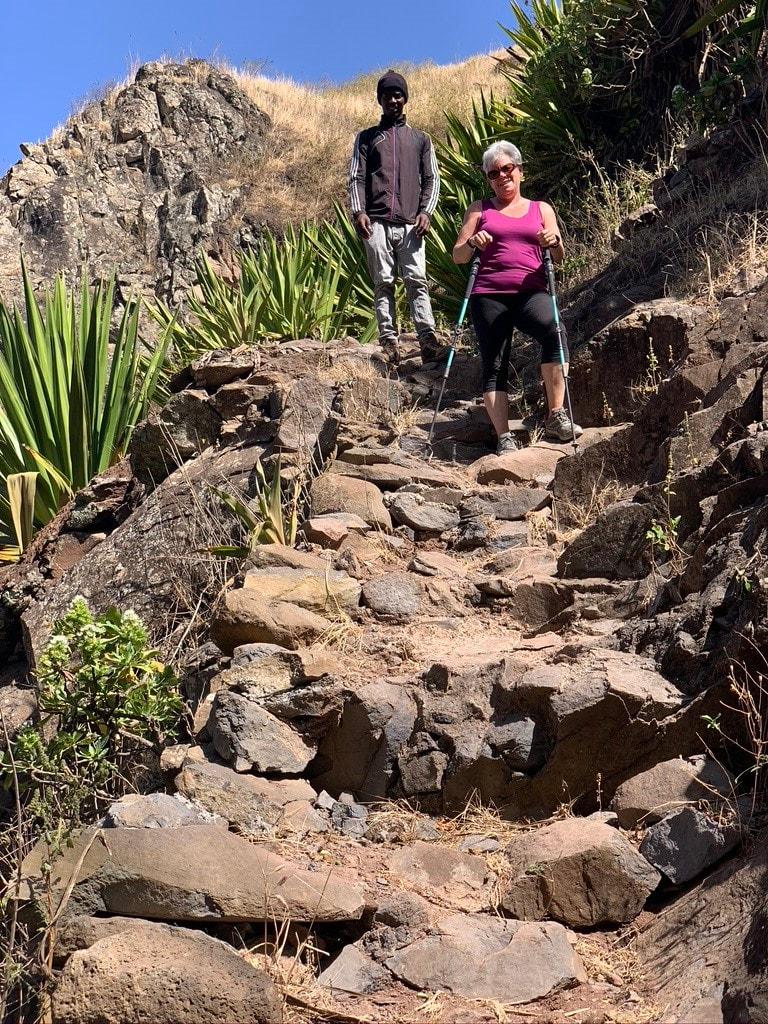
A group of boys passed us, on their 40 minute hike home from school. The youngest one, maybe eight years old, was carrying a 10 litre jug of water on his head. He was dripping with sweat and scowling at the older boys who were laughing and running ahead of him.
We finally reached the surer footing of a valley. In a noisy shed a group of men were feeding long stalks through a mechanical press. One of them saw me watching and signaled me over for a closer look. He held up a jug of dark brown sludge and offered me a sip. I wasn’t sure if he was teasing me. I held my hand up and shook my head. He insisted, miming drinking, and finally took a few chugs himself. Not wanting to be rude, I agreed to give it a try. It was sweet, like brown sugar in liquid form. Freshly squeezed cane sugar. (DH may be braver than me on the slopes, but he didn’t have the courage to try the thick drink.)
We had a half-hour wait in a patch of shade by a church that looked like a small school. You never know when the next aluguere will come. They don’t leave until they have a full load of people. Sometimes that can be a few short minutes. Sometimes it can be nearly an hour. Patience is essential to the way of life here. I was grateful for the rest. My legs were still shaky. Despite the four-hour hike, I had no appetite for the sandwiches and fruit our hotelier had packed for us. I downed two litres of water though.
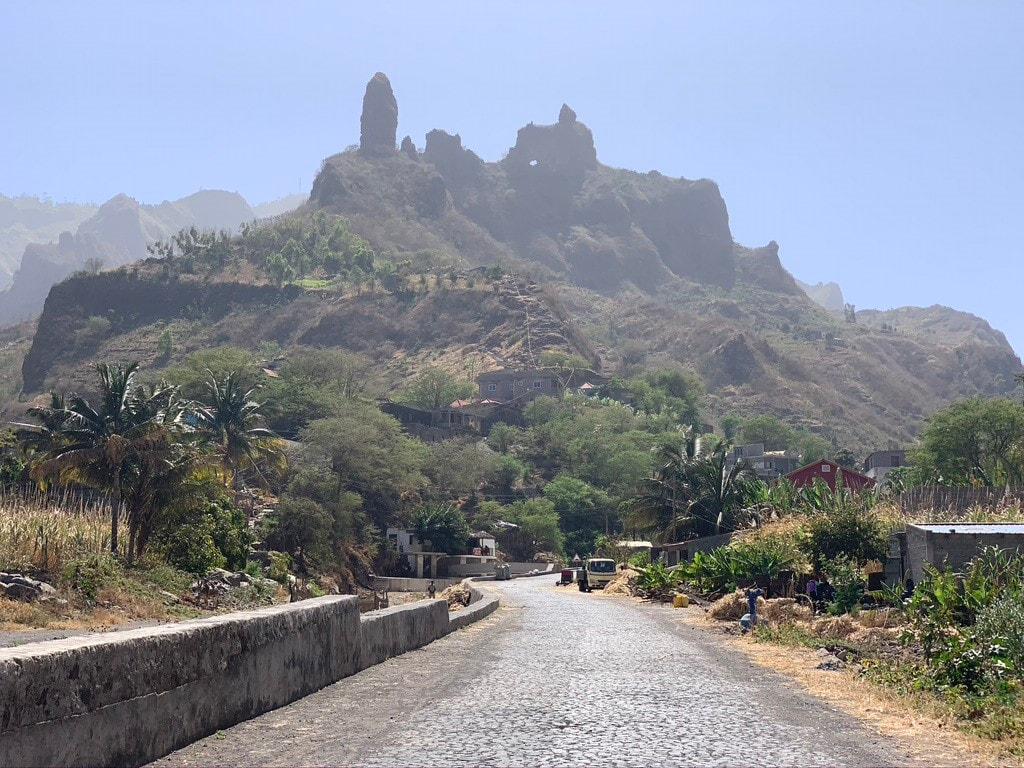
We passed the time watching the rustic rural scenes all around us. Donkeys were being loaded up with sugar cane and led to the processing shed. Women were carrying bricks on their heads, slowly trudging up and down the hillside. A mother in a brightly coloured headscarf was carrying eggs in from the chicken coop. She stopped and turned back to argue with her toddler son who didn’t want to go back to the house. Eventually she used the time-honoured tradition of mothers everywhere: she shrugged and walked around the corner towards the house without him. It only took a few seconds for him to run after her.
Zegue wanted to show us a few other little villages, so we took a series of aluguers to get home. There are two main types of aluguers: mini-vans and trucks. The trucks have woven straw coverings resting on a metal frame in the back to give the riders some shade. Inside, you cram onto two benches running the length of the truck bed. The driver won’t leave until it is full, and then, of course, more people want to get on. By late afternoon, many of those people are carrying big bags of supplies or a basket of fish, backpacks and small children.
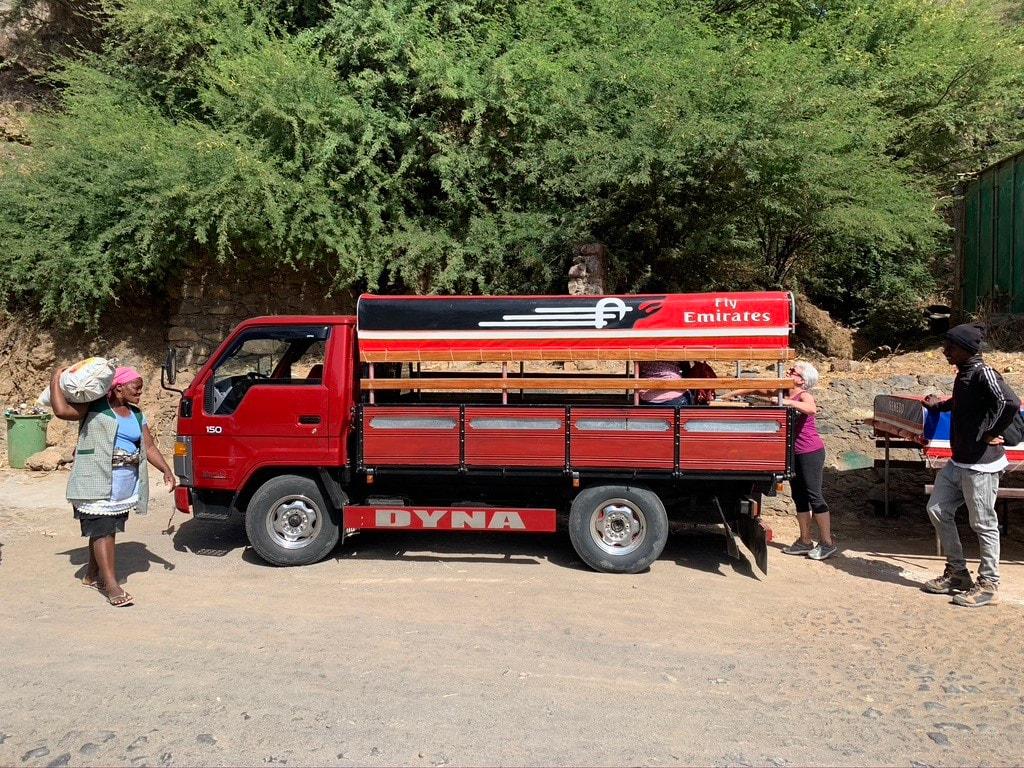
There is always room for one more person. Even when that means only about two square inches of your bum are still on the bench because you moved forward to let yet another person in. An old woman clambered up and was sitting on the back gate of the pickup truck. A man held on, standing on the runner board, behind her. He’d step down to let passengers climb out every time the aluguere stopped. Once the driver took off before the man had got back on, and he had to run and jump on to the moving vehicle. We raced up and down along the coastal and mountain roads. Up to 100 km/hour. I tried not to think about accident rates. I’d survived the hike; surely I would survive this too.
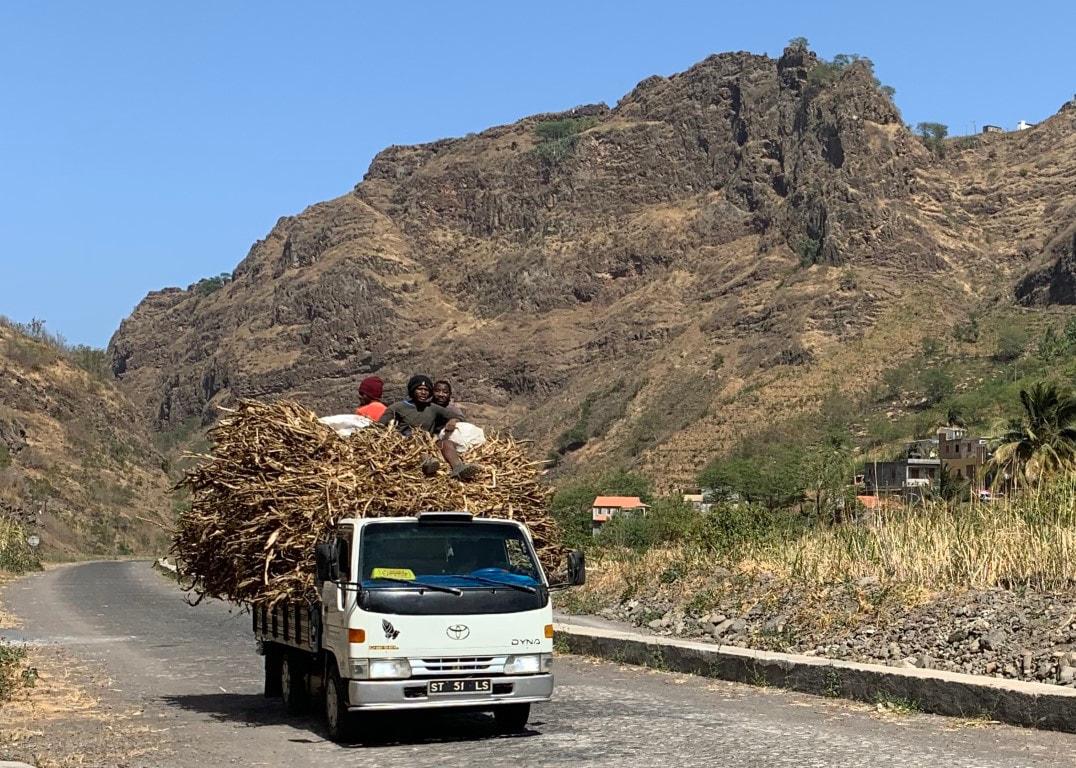



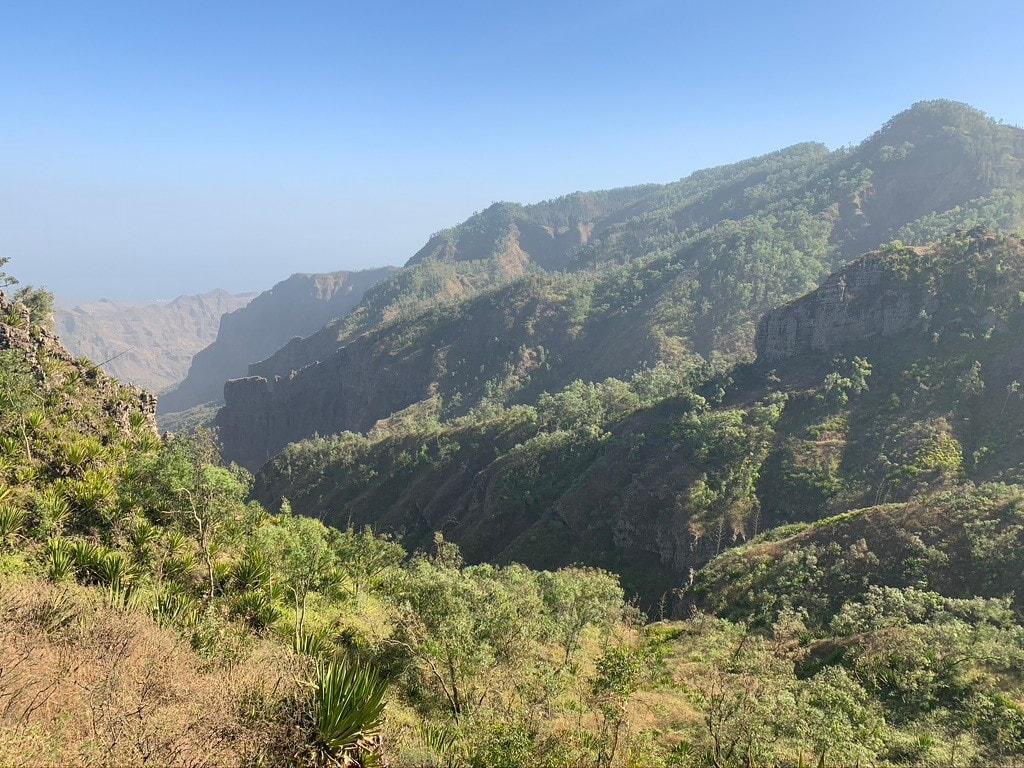
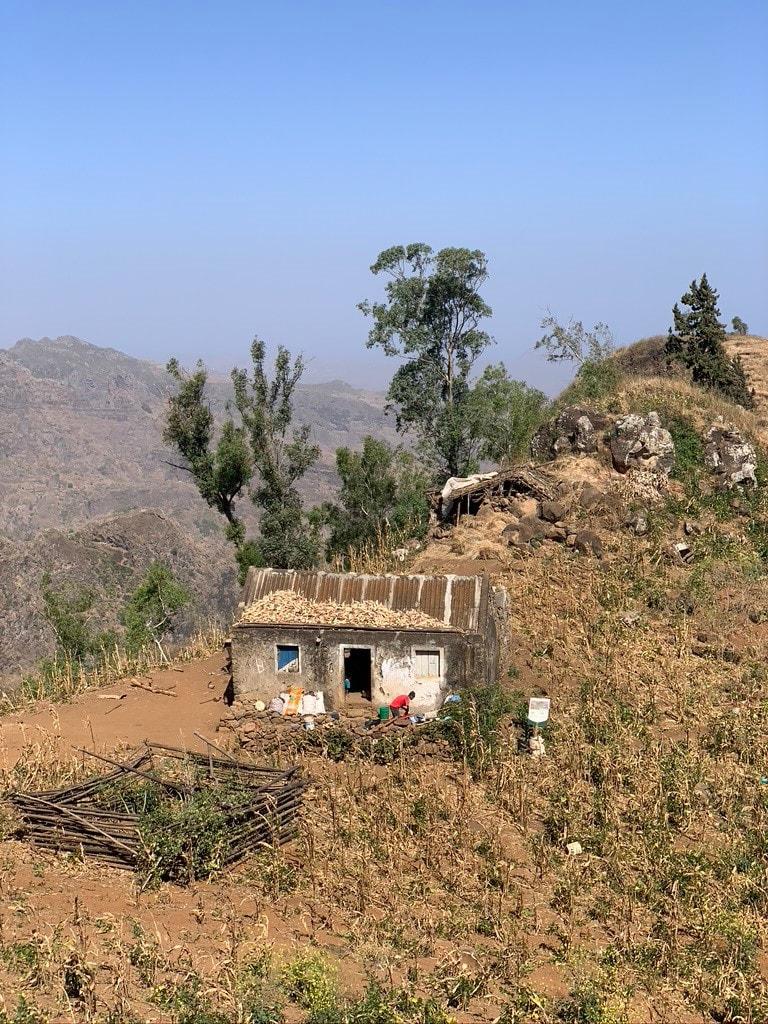

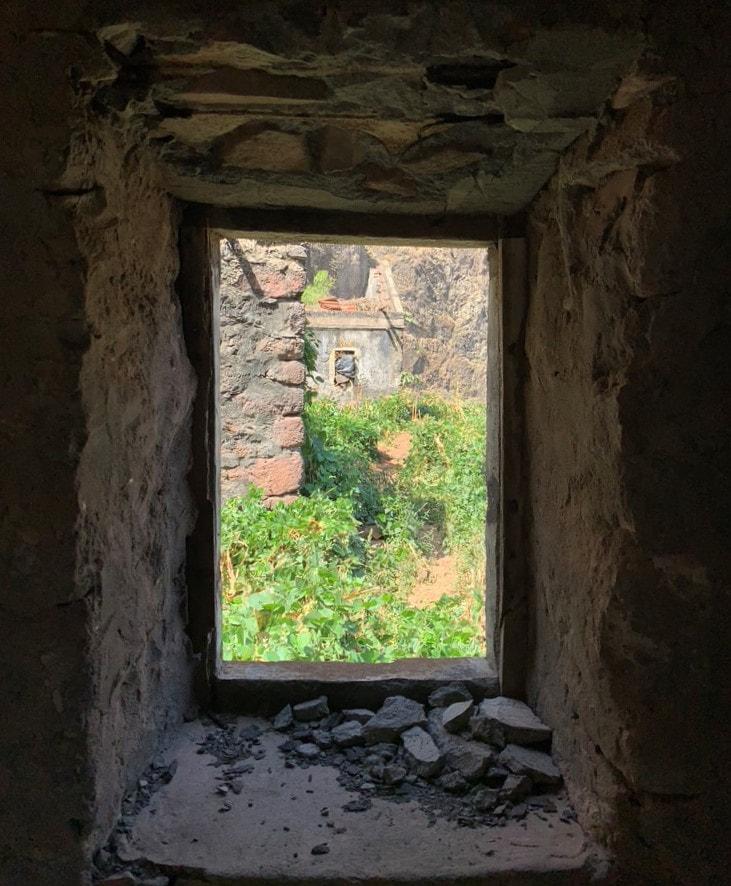
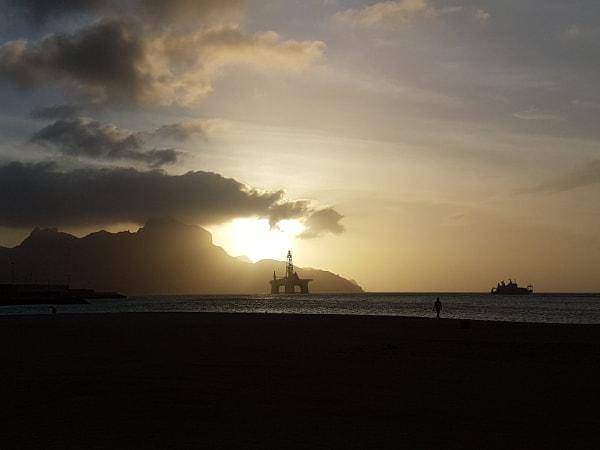
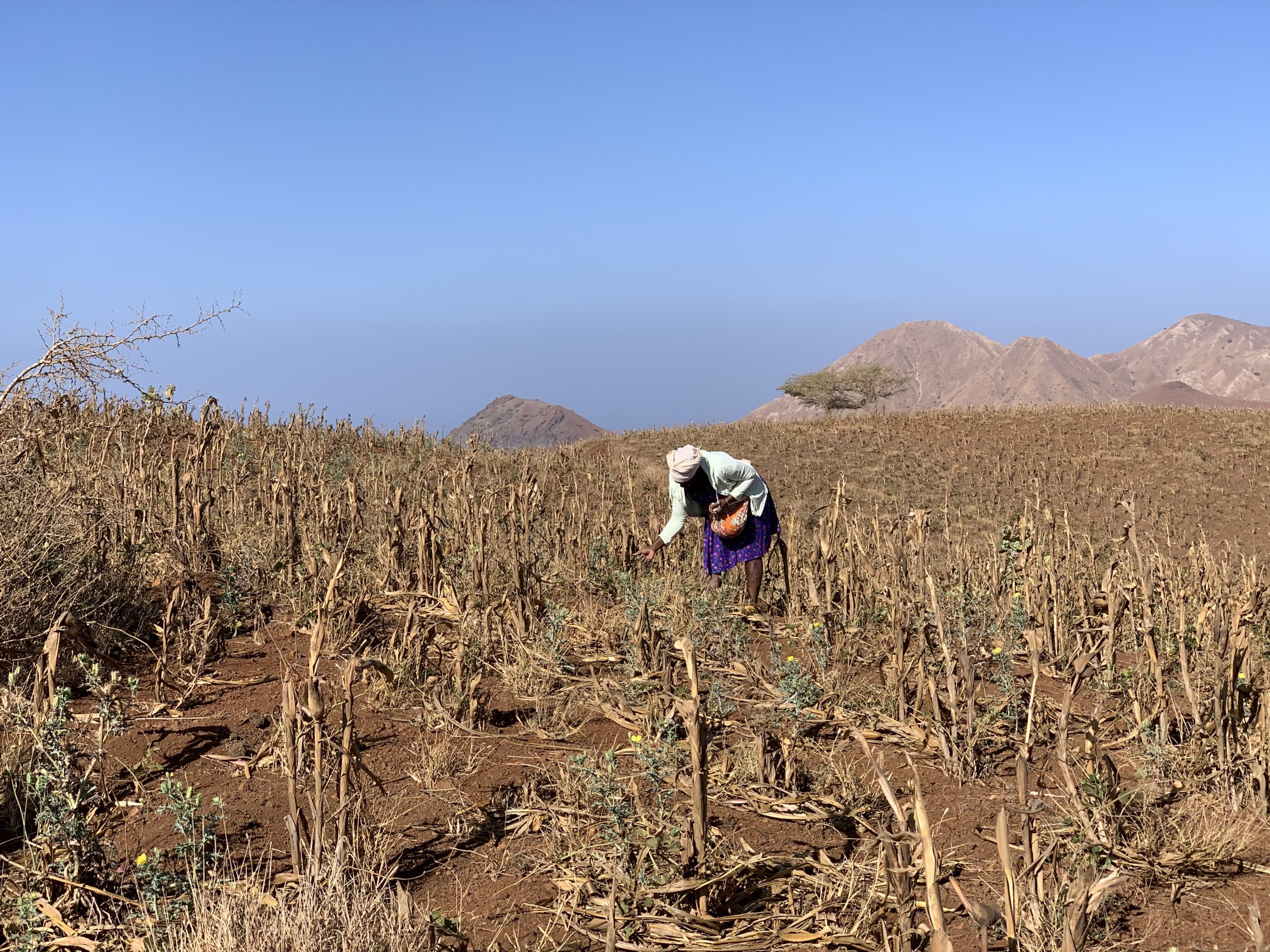
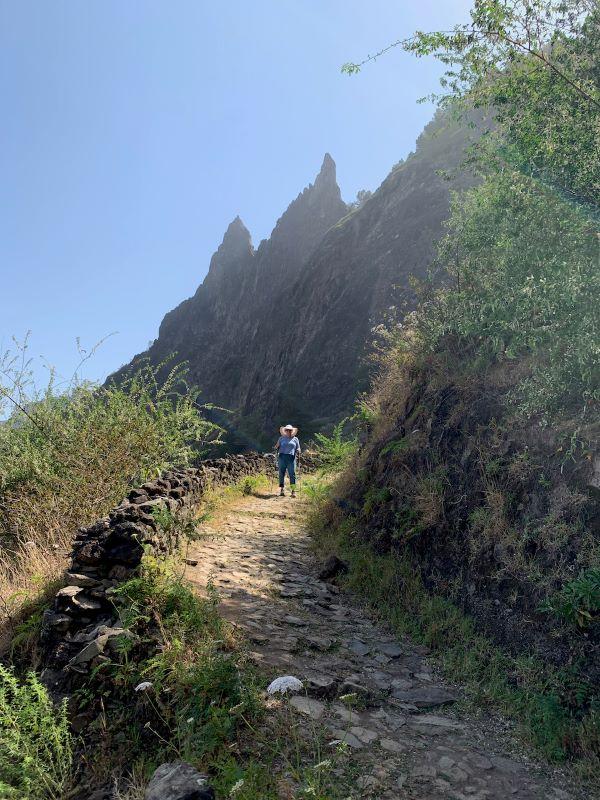
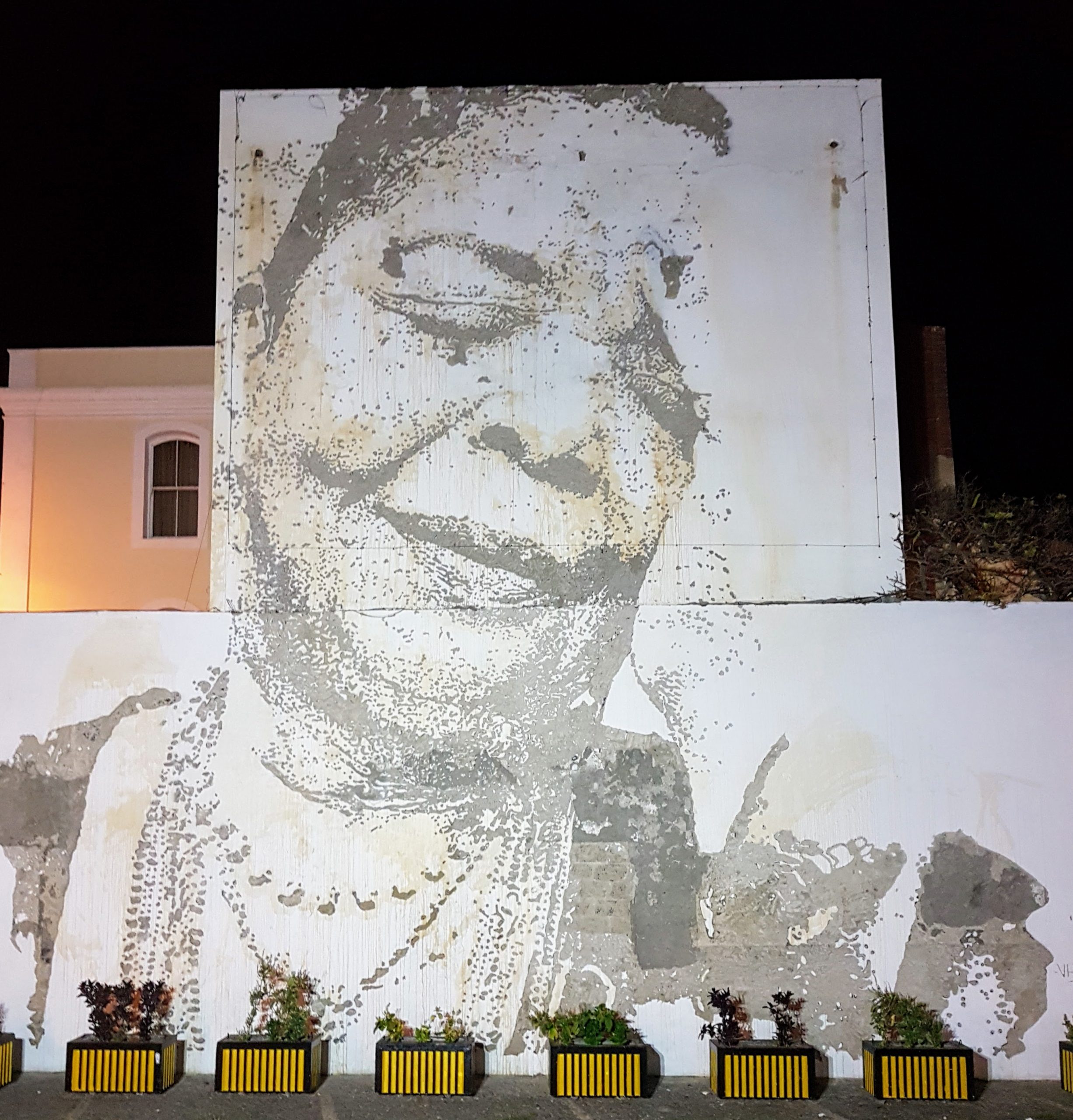
[…] the previous hike (see Hiking the Serra Malagueta Natural Park in Santiago, Cape Verde) this was a bit worrying. But when I looked down and around me I couldn’t possibly be upset. The […]
Last weekend I walked with a group for about an hour and a half in downtown Toronto, almost completely indoors. I suppose it’s not quite the same thing.
It’s a start!
Hi Tema… GR8 fun!!!
FOMO is better than not doing something!!! Whatever works2 keepU active… functional & vital!!! UROCK!!!
BTW… what is doucement?
In this case, doucement means take it slowly. No rush. It can also mean gently, quietly, calmly.
Greetings from the lanai in Naples, FL, where I am sipping a latte and feeling ….um….lazy and slothful! After reading this! Tema, I laughed so hard at your rumination about why you agree to hike. That is so funny, and so exactly how I feel!! You are both more energetic and more courageous than me! Thus…the lanai! Have fun. Love reading your blog. xo
So glad you are enjoying it, Colleen, and that you are enjoying a warm and restful time. Miss you!
I feel your paralysis on the trail. Same thing happened to me at Numtija Lodge in BC. Alas DH had skipped ahead and I had no guide to lead support and cajole me along. I think the after pain was worth your hike Tema! The views look fantastic. Enjoy the next one next week!
Even DH admits that the guide was a darn good idea for that hike. He also hired Zegue for another hike the next day, while I sat around the hotel and wrote.